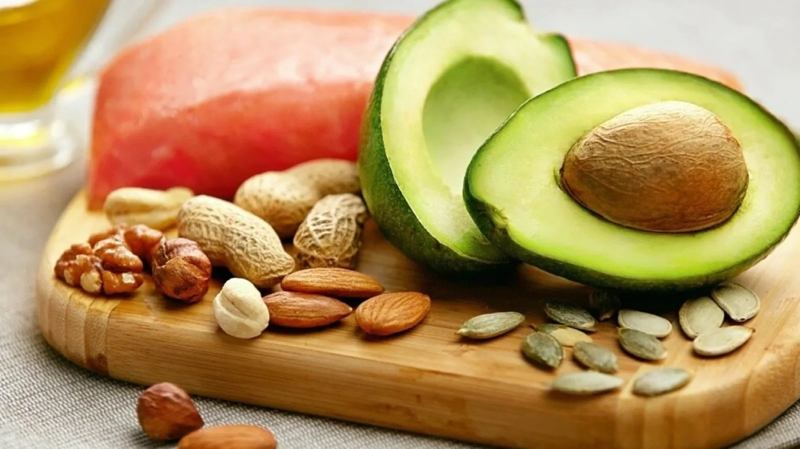For many with diabetes, fat often gets painted as the villain – something to be avoided at all costs. But the truth is far more nuanced. Certain types of healthy fats play a crucial role in diabetes management, offering surprising benefits for blood sugar control, overall health, and well-being. This guide delves into the fascinating world of fats, exploring their impact on blood sugar and empowering you to make informed choices for a healthy diabetic lifestyle.
Demystifying Fats: Understanding the Good, the Bad, and the In-Between
Fats are a vital macronutrient, providing energy, supporting cell function, and aiding in vitamin absorption. However, not all fats are created equal. Here’s a breakdown of the different types:
- Saturated Fats: Found in animal products like red meat, full-fat dairy, and some plant sources like coconut oil. Excessive saturated fat intake can elevate LDL (“bad”) cholesterol and increase the risk of heart disease.
- Unsaturated Fats: These are further categorized into:
- Monounsaturated Fats (MUFAs): Found in avocados, nuts, olive oil, and canola oil. MUFAs can improve insulin sensitivity and lower LDL cholesterol levels.
- Polyunsaturated Fats (PUFAs): Further divided into omega-3 and omega-6 fatty acids. Omega-3s found in fatty fish, flaxseeds, and walnuts can reduce inflammation, improve blood sugar control, and lower triglycerides. Omega-6s are abundant in vegetable oils and seeds, and balance is needed with omega-3s for optimal health.
- Trans Fats: These are artificially created fats found in processed foods like fried snacks, baked goods, and margarine. Trans fats are detrimental to health, raising LDL cholesterol and increasing the risk of heart disease.
The Impact of Fats on Blood Sugar: A Balancing Act
While certain fats can elevate blood sugar, others may surprisingly offer benefits:
- Saturated Fats and Blood Sugar: Excessive saturated fat intake can impair insulin sensitivity and lead to higher blood sugar levels.
- Unsaturated Fats and Blood Sugar: MUFAs and PUFAs, particularly omega-3s, may improve insulin sensitivity and help regulate blood sugar levels.
- Trans Fats and Blood Sugar: Trans fats have a double whammy – they raise bad cholesterol and can impair insulin sensitivity, negatively impacting blood sugar control.
Beyond Blood Sugar: The Broader Benefits of Healthy Fats
Healthy fats offer a range of additional benefits for people with diabetes:
- Promote Satiety: Fats keep you feeling fuller for longer, reducing cravings and preventing overeating, which can lead to blood sugar spikes.
- Support Heart Health: MUFAs and PUFAs can improve cholesterol levels by lowering LDL (“bad”) cholesterol and increasing HDL (“good”) cholesterol, reducing the risk of heart disease, a common complication of diabetes.
- Reduce Inflammation: Omega-3 fatty acids possess anti-inflammatory properties, which can be beneficial for people with diabetes who are prone to chronic inflammation.
- Energy Source: Healthy fats provide sustained energy, helping you maintain an active lifestyle, crucial for managing diabetes.
Building a Healthy Fat Profile: Making Smart Choices
Now that you understand the impact of different fats, let’s explore how to incorporate healthy fats into your diabetic diet:
- Limit Saturated Fats: Choose lean protein sources like skinless chicken or fish. Opt for low-fat or fat-free dairy products. Limit processed meats and fried foods.
- Embrace MUFAs and PUFAs: Drizzle olive oil or avocado oil on salads and vegetables. Sprinkle nuts and seeds on yogurt or oatmeal. Include fatty fish like salmon or tuna in your diet at least twice a week. Consider flaxseeds or chia seeds for an added omega-3 boost.
- Beware of Hidden Trans Fats: Read food labels carefully. Avoid products containing partially hydrogenated oils or hydrogenated vegetable oil, which are indicators of trans fats.
- Cooking with Healthy Fats: Opt for cooking methods like baking, grilling, or steaming. Use healthy fats like olive oil or avocado oil for these methods.
Sample Meal Plan with Healthy Fats:
- Breakfast: Scrambled eggs with spinach and avocado slices, whole-wheat toast with almond butter.
- Lunch: Grilled salmon salad with mixed greens, olive oil dressing, and walnuts.
- Snack: Sliced apple with almond butter, Greek yogurt with a sprinkle of berries and chia seeds.
- Dinner: Chicken stir-fry with vegetables and a healthy drizzle of sesame oil, brown rice.
Additional Tips:
- Consult a Registered Dietitian: A registered dietitian can create a personalized meal plan tailored to your specific needs and preferences, ensuring you meet your nutritional requirements while incorporating healthy fats for optimal blood sugar control.
- Read Food Labels: Pay close attention to the fat content and type of fat listed on food labels. Look for products with high MUFA and PUFA content and minimal saturated and trans fats.
- Portion Control Matters: While healthy fats offer benefits, moderation is key. Be mindful of portion sizes to avoid exceeding your daily calorie needs.
- Experiment with Flavor: Healthy fats can add richness and flavor to your meals. Explore different types of healthy oils, nuts, and seeds to create delicious and satisfying dishes.
Living a Balanced Life with Diabetes
Managing diabetes involves making informed choices about what you eat. By understanding the impact of different fats on your blood sugar and incorporating healthy fats into your diet, you can take control of your health and live a fulfilling life. Remember, you are not alone on this journey. Consult your healthcare team for personalized guidance and support.
Conclusion:
Embracing healthy fats as part of your diabetic diet can be a game-changer. By making informed choices and prioritizing whole, unprocessed foods, you can improve blood sugar control, support overall health, and experience a greater sense of well-being.

 Diabetology2 weeks ago
Diabetology2 weeks ago
 Diabetology1 week ago
Diabetology1 week ago
 Diabetology5 days ago
Diabetology5 days ago
 Diabetology7 days ago
Diabetology7 days ago
 Diabetology7 days ago
Diabetology7 days ago
 Diabetology4 days ago
Diabetology4 days ago
 Diabetology4 days ago
Diabetology4 days ago
 Diabetology2 days ago
Diabetology2 days ago










